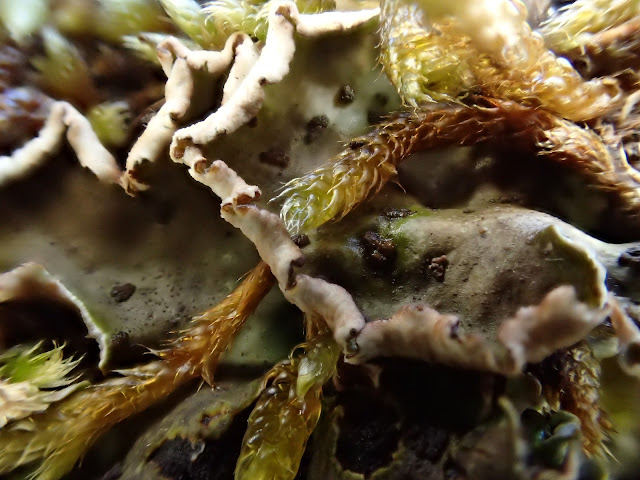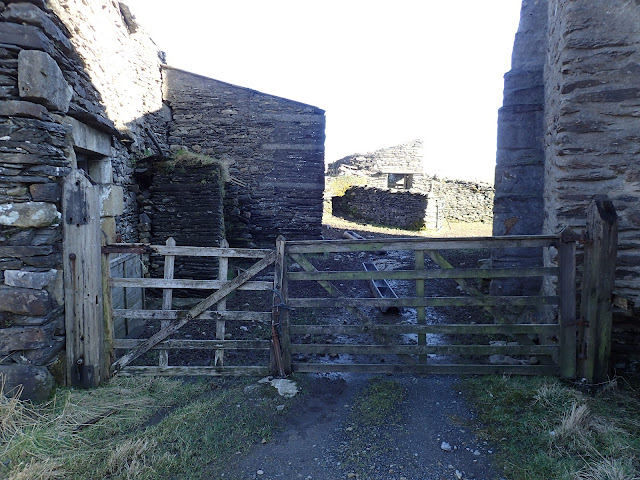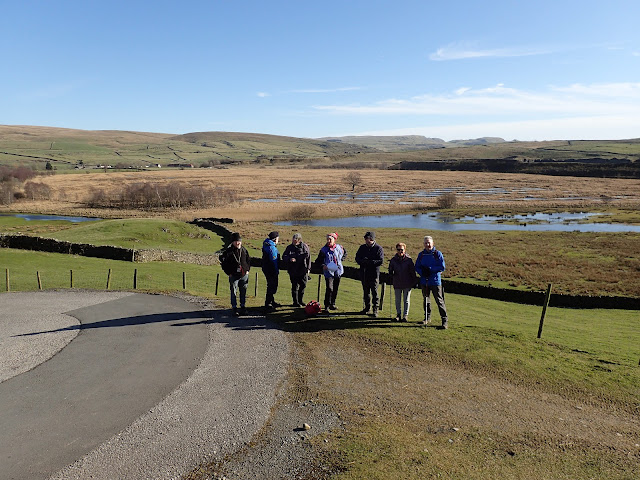12 March 2022
This post has two main aims:
1. A three year marker in my lichen survey of SD86
2. Showing some lichen pictures that I need answers for.
It is three years since I started to survey hectad SD86 !!
That was Feb/March 2019 after returning home after the Workshop at Cober Hill, Cloughton, near Scarborough, with the British Lichen Society - and armed with a dot map from Janet Simkins the BLS Data Manager showing the number of lichen records for each monad in my ViceCounty - VC 64.
A hectad has 100 1km squares - a lot. "I will record 10 squares per year" I said.
On 3 April 2019 I wrote my first lichen blogpost:-
I attended Cober Hill again in 2020 - just a week or so before Covid Lockdown.
In February this year 2022 I had hoped to attend Cober Hill, but caught Covid at just the wrong time, so was unable to go. It also stopped me attending a two day lichen course in Cumbria with the Cumbria group.
(.. If you ask.. . Fortunately Covid came to me as a cold. I tested negative the first two days of the cold - only on the third day did it register positive. Then it took 13 more days to be negative again.)
Three years on, I have achieved recording 30 monads each with 19 or more species in each.
There is an average score of 31 species per monad, with the highest scores being 62 (Swaw Beck), 58 (How Beck), 47 (Winskill Stones), 44 (Scaleber/Black Gill). The first two had six or more visits, Winskill Stones had had three, and Scaleber had had at least four visits...
Yesterday (9 March 2022) I went out with J Wulf's Settle Nordic Walkers and recorded some Ramalina fraxinea - fallen off a solitary sycamore above Catrigg Foss..in a new monad for my survey. - Which encourages me to stop now and take stock.
I also made the Resolution to WRITE UP any new records that I had found.
THAT DAY
(And wrote up all three)
Today 12th March.
It was sunny ish and I set off at 3.30pm intending to continue above Catrigg Foss.
I made the mistake of driving,
and parking next to the road in the parking space at the far end of Winskill Stones.
And what do lichenologists do in Car Parks?
Yes,
They rarely get beyond the boundary of the car park..
And so it was.
I parked, and set of at 180degrees to my intended destination and stopped
-at the rickety wooden gate by the road just opposite my car - with Fuscidea lightfootii
And two more unnamed - Note for scale:
The majority of close ups were taken with my Olympus tough camera and the capture a field of view about/ or a little bigger thn29mm wide and 15 mm tall.
 |
| Query No 1. |
 |
| Query No 2 |
-at a limestone outcrop just beyond (possibly quarried a little in the past) with lots of fascinating fossils rather like the labelled fossils at the cattle-grid at the road down to Lower Winskill from the other carpark- There was - some potential Farnoldia, on the limestone: - and a brown areolate crustose species with black fruiting bodies
-----------------------------------------------
Also intriguing on this rock were "Little white eggs" laid in the depressions left or made by a lichen fruiting body.
 |
| See the "eggs" near the top |
 |
Query 4 and Query 5
On the left is Placynthium nigrum with its navy blue prothallus.
Top centre you can see the possible white eggs?
And I am not sure what the black fruiting bodies are - All suggestions welcome
|
-------------------------------------------
-
I walked over the cattle grid and north west down the road 15m
There was a thick white lichen growing over moss.. It was very thick and lumpy almost papillate. I searched for fruiting bodies but could not find any, but put possible contenders in a plastic bag.
I racked my brains remembering there was a parasitic lichen that grew on moss..
I looked over the wall to the horizon to the valley separating Penyghent on the left and Fountains Fell on the right
Then I noticed patches of moss were always at certain points on the wall - always next to a wooden (bird perch) post.
So I photographed the moss
and then and noticed a white patch in the moss.. It was Diploschistes muscorum - in fruit.
Indeed on the top of the wall there was a big patch of Cladonia pocillum - The host on which the Diploschistes initially grows. (See top right of picture belwo)
-------------------------------------------
By now now the sky was grey and I was getting freezing cold.
I came home.
-------------------------------------------
Back at home:
Now I must
1. Enter the species I know..
-------------------------------
End of day:-
Well I've increased the list for SD8366 by 5 to give a total of 52. I only need another four species to move it from the orange band up to the red band at 56 species.
Five new species for my list for SD8366 - And all within 50 metres of the car park!
-------------------------------
Any help with queries would be really welcome.
-----------------------------------------------------
and just checking ..I see I did not enter the Peltigera leucophlebia I found on that beautiful Lockdown day on 9 May 2020- When I walked on Plantlife Reserve photographing wildflowers such as Early Purple Orchids and Horseshoe Vetch for my Wildflower Dairy
So I add that now.
Only two months away. Early Summer is nearly here!. Must get planning. .. and so much to do before then.





















































